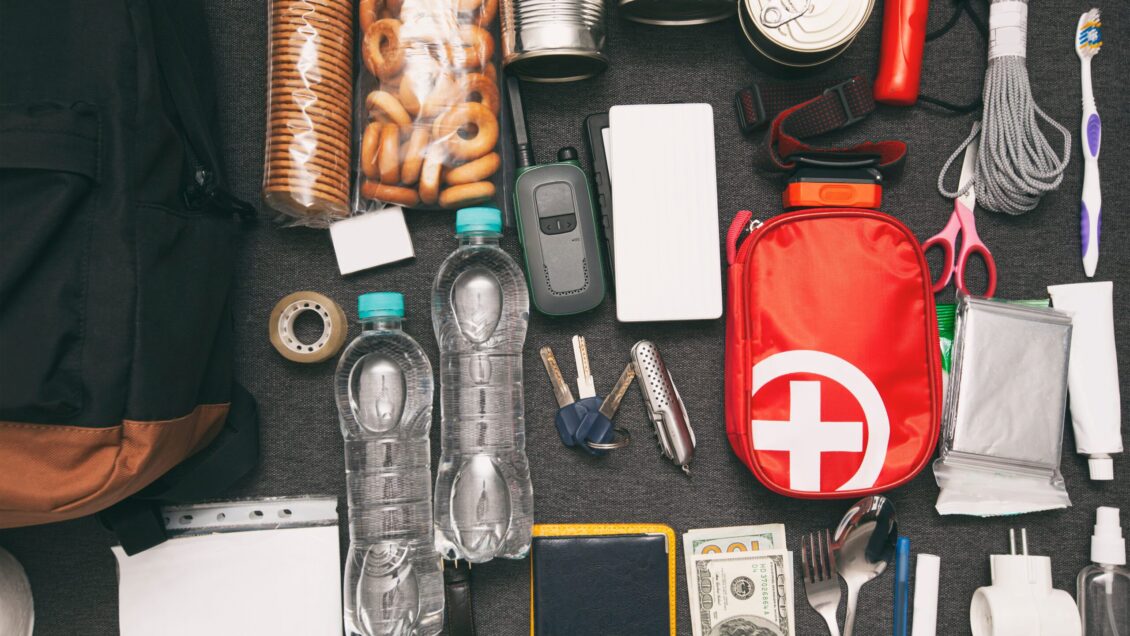September is designated as National Preparedness Month and Clemson University Emergency Management wants to remind you of the importance of being prepared in the event of a disaster or emergency that could happen at any time.
To be ready for any type of disaster or emergency that may affect our area, you should be informed, make a plan and build a kit.
Be Informed
- Know what kind of disasters and emergencies are most common for where you live.
- Sign up for CU Safe Alerts to stay informed on campus.
- Have multiple ways to get emergency information, including NOAA weather radio, local TV and radio broadcasts and wireless emergency alerts to your phone.
- Download the FEMA app and get weather alerts from the National Weather Service.
Visit ready.gov/be-informed or the Stay Informed section of the South Carolina Emergency Management Division (SCEMD) website for more information to help you stay ready.
Make a Plan
Your family may not be together if a disaster strikes, so it is important to know which types of disasters could affect your area. Know how you’ll contact one another and reconnect if separated. Establish a family meeting place that’s familiar and easy to find.
- Put a plan together by discussing the following with your family, friends or household:
- How will I receive emergency alerts and warnings?
- What is my shelter plan?
- What is my evacuation route?
- What is my family/household communication plan?
- Do I need to update my emergency preparedness kit?
- Consider specific needs for your household
As you prepare, tailor your plans and supplies to your specific daily living needs and responsibilities. Be mindful of these factors when developing your plan:
- Different ages of members within your household
- Locations frequented
- Dietary needs
- Medical needs, including prescriptions and equipment
- Create a Family Emergency Plan
- Utilize the Ready.gov Make a Plan form to easily fill in contact info and other important information and send yourself a PDF to print and save digitally.
- Practice your plan with your family or household
- Quiz your kids every six months so they remember what to do.
- Conduct fire and emergency evacuation drills.
- Replace stored water every three months and stored food every six months.
- Test and recharge your fire extinguisher(s) according to the manufacturer’s instructions.
- Test your smoke detectors monthly and change the batteries at least once a year.
For more information on making a plan, visit ready.gov/plan or the Emergency Planning section of the SCEMD website.
Build a Kit
It is important to keep enough supplies in your home to meet your family’s needs for at least three days. Assemble a Family Emergency Kit with items you may need in an emergency or evacuation. Store these supplies in sturdy, easy-to-carry containers such as suitcases, duffle bags or covered storage containers. Some things to consider:
- Water, two gallons of water per person per day for at least three days, for drinking and sanitation
- Food, at least a three-day supply of non-perishable food
- Battery-powered or hand crank radio and a NOAA Weather Radio with tone alert and extra batteries for both
- Flashlight and extra batteries
- First aid kit
- Prescription medications and glasses
- Infant formula and diapers
- Pet food and extra water for your pet
- Important family documents such as copies of insurance policies, identification and bank account records in a waterproof, portable container
- Cell phone with chargers and a backup battery
For a full list of items to include in an emergency kit and how to maintain your kit, visit ready.gov/kit or the Family Emergency Kit section of the SCEMD website.

